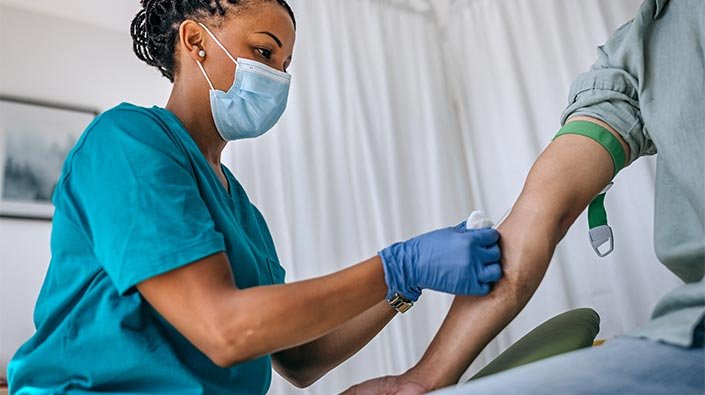Advancements in Clinical Lab Conferences for Infectious Disease Testing
Summary
- Clinical lab conferences play a crucial role in discussing advancements and best practices in infectious disease testing.
- These conferences bring together professionals in the field to share knowledge, research findings, and new technologies.
- Topics often include test accuracy, emerging pathogens, and the impact of Infectious Diseases on public health.
Introduction
Infectious Diseases continue to pose a significant threat to public health worldwide. Clinical laboratories play a vital role in the diagnosis and management of these diseases, with testing being a cornerstone of healthcare delivery. Clinical lab conferences provide a platform for professionals to discuss the latest developments and best practices in infectious disease testing. This article explores how these conferences address this critical area of healthcare.
Advancements in Testing Technologies
One of the key topics discussed at clinical lab conferences is the advancements in testing technologies for Infectious Diseases. With rapid advancements in molecular diagnostics, syndromic testing, and Point-Of-Care Testing, professionals gather to discuss the latest tools available for accurate and timely diagnosis. These discussions often focus on the sensitivity, specificity, and reliability of these technologies in detecting various pathogens.
Key points include:
- Next-generation sequencing for identifying unknown pathogens
- Rapid antigen tests for diagnosing common Infectious Diseases
- Digital PCR for quantifying viral loads
Quality Control and Assurance
Ensuring the accuracy and reliability of infectious disease testing is crucial to proper patient care. Clinical lab conferences provide a forum for discussing Quality Control and assurance measures to uphold testing standards. Professionals share best practices, guidelines, and regulatory requirements to maintain the integrity of testing processes. Discussions may cover Proficiency Testing, internal Quality Control, and accreditation programs.
Key points include:
- The role of regulatory bodies in setting Quality Standards
- Implementing Quality Control measures in the lab setting
- Evaluating the performance of new testing methods
Emerging Pathogens and Infectious Disease Outbreaks
With the constant threat of emerging pathogens and infectious disease outbreaks, clinical lab conferences address the challenges of detecting and managing these diseases. Professionals exchange information on new and reemerging pathogens, including their diagnostic characteristics and epidemiology. Discussions also focus on response strategies, surveillance systems, and the role of laboratory testing in outbreak investigations.
Key points include:
- Case studies of recent infectious disease outbreaks
- Laboratory-based surveillance for early detection of pathogens
- Developing rapid response protocols for outbreak scenarios
Public Health Impact and Disease Prevention
Infectious Diseases have a significant impact on public health, making disease prevention a priority for Healthcare Providers. Clinical lab conferences delve into the role of testing in disease prevention strategies, including vaccination campaigns, antimicrobial stewardship, and infection control measures. Discussions also highlight the importance of accurate and timely testing in reducing disease transmission and improving patient outcomes.
Key points include:
- The impact of Infectious Diseases on vulnerable populations
- Integrating laboratory data into public health initiatives
- Educating healthcare professionals and the public on disease prevention
Conclusion
Clinical lab conferences offer a valuable opportunity for professionals to exchange knowledge, share best practices, and discuss the latest advancements in infectious disease testing. By addressing key topics such as testing technologies, Quality Control, emerging pathogens, and disease prevention, these conferences play a vital role in advancing the field of clinical laboratory medicine and improving patient outcomes.

Disclaimer: The content provided on this blog is for informational purposes only, reflecting the personal opinions and insights of the author(s) on the topics. The information provided should not be used for diagnosing or treating a health problem or disease, and those seeking personal medical advice should consult with a licensed physician. Always seek the advice of your doctor or other qualified health provider regarding a medical condition. Never disregard professional medical advice or delay in seeking it because of something you have read on this website. If you think you may have a medical emergency, call 911 or go to the nearest emergency room immediately. No physician-patient relationship is created by this web site or its use. No contributors to this web site make any representations, express or implied, with respect to the information provided herein or to its use. While we strive to share accurate and up-to-date information, we cannot guarantee the completeness, reliability, or accuracy of the content. The blog may also include links to external websites and resources for the convenience of our readers. Please note that linking to other sites does not imply endorsement of their content, practices, or services by us. Readers should use their discretion and judgment while exploring any external links and resources mentioned on this blog.
